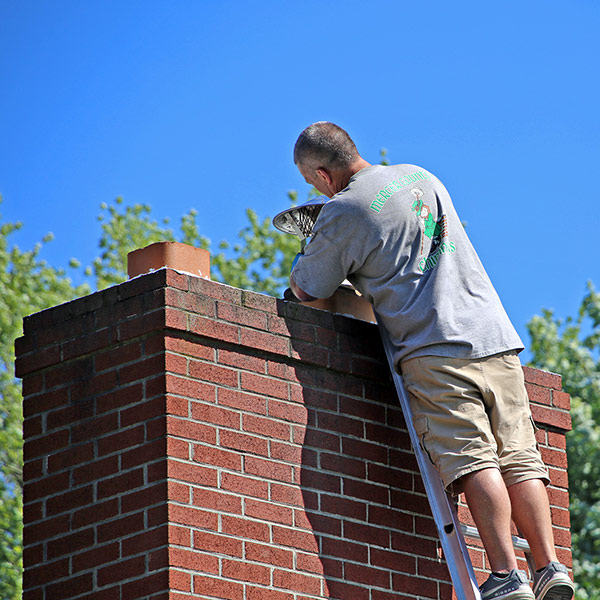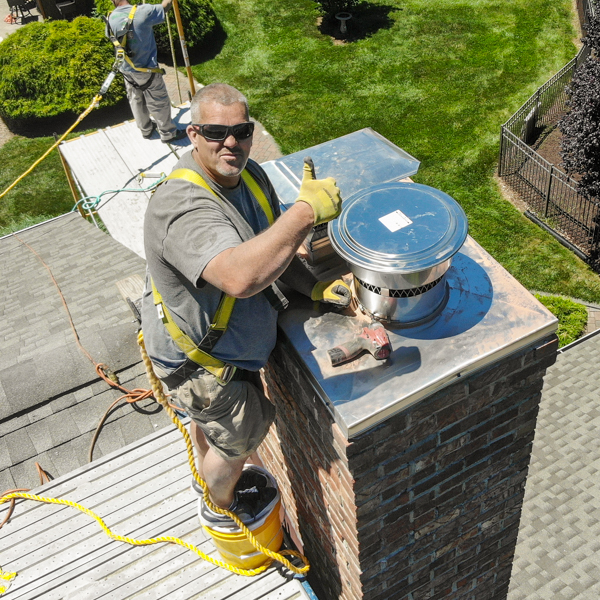101: The Basic Components
Your chimney is an essential component to a healthy and efficient fireplace that requires yearly inspection, maintenance, and cleaning to keep it running efficiently and safely. However, if you’re like most homeowners, you don’t give it much thought until there’s a problem. However, familiarizing yourself with the basic parts of your chimney and their function can help you pinpoint issues before they get out of hand and lead to significant and expensive repairs.
Let’s look at the basic parts of your chimney and their purpose.

The Flue
People often use the term flue to mean the flue liner and the actual flue, but they’re not always the same thing. The flue is the vertical portion of the chimney where smoke and gasses flow from the fire and out of the house, while the liner is what protects the interior chimney walls from high temperatures and corrosion. Back in the old days, chimneys weren’t built with liners, but today, it’s the law because of safety concerns.
The Liner
As mentioned, the liner is a component that protects the flue and the home’s combustible materials from the heat produced by the fire. Most chimney liners are made from clay tiles or metal. It’s crucial that you have a professional inspect the liner every year for cracks or any signs of damage that might compromise it and lead to a chimney fire. The average lifespan of a chimney liner is between 15 and 20 years, depending on the materials it’s made from and how well maintained it is.
The Cap
Most chimneys don’t include a cap, but it’s a necessary component because it prevents moisture from snow, rain, and ice from seeping into the brickwork and eventually, your home. Moisture is a chimney’s number one enemy, causing cracking, deterioration and structural damage. Not only does a chimney cap protect your chimney against water, it stops hot embers from exiting the flue and landing on your roof, potentially causing a fire. Finally, chimney caps prevent rodents from getting in and building their nests and twigs, leaves, and branches from falling down the flue causing blockages.

The Crown
A crown is a cement component that rests on top of the chimney, serves as another protection against moisture by diverting water away from the masonry materials. The crown needs routine inspection to check for cracks, which can compromise its functionality.
The Flashing
Metal flashing is installed where the roof meets the chimney and prevents water from getting through the roof and into your home. Like the chimney cap, the flashing requires routine inspection because it will rust as it ages and causes the roof to leak.
The Damper
The damper consists of two metal plates that sit above the firebox. When you start a fire, you open the damper to allow the smoke and gasses to escape up the flue and when the fire goes out, you close it to keep the remaining heat in. Like the flashing, the damper requires routine maintenance, cleaning, and inspection to check for defects caused by rust that could cause a faulty seal.
The Smoke Chamber
Lastly, the smoke chamber is the portion of your fireplace that sits between the damper where gasses accumulate before they travel up the flue. The smoke chamber is an often ignored fireplace component, but next to the chimney, it’s the next highest risk of a fire.
As you can see, your chimney and fireplace are comprised of more elements than you may have realized, and each one plays a crucial role in keeping your system running efficiently and safely. To ensure that happens, you need professional chimney cleaning from expert technicians. At Mercer County Chimney Services, our technicians are licensed, insured, and certified by the National Fireplace Institute and the Chimney Safety Institute of America.
We’re located in Hamilton, NJ and serve residents throughout Mercer County. For chimney service you can trust, call us today to book an appointment at 609-802-5288 or fill out our online form.


